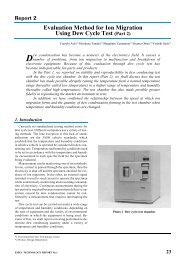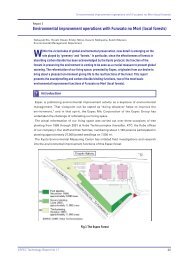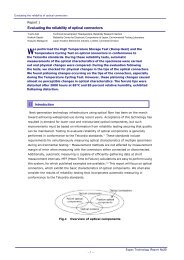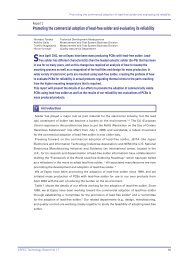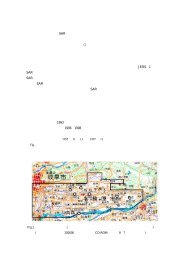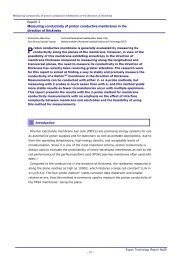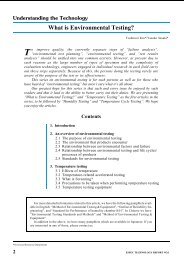download
download
download
You also want an ePaper? Increase the reach of your titles
YUMPU automatically turns print PDFs into web optimized ePapers that Google loves.
Measuring Conductivity of Proton Conductive Membrane in the direction of thickness, partⅡ:<br />
using the 4-probe method in the direction of thickness<br />
Photo 1 (C) exhibits an important conclusion to be drawn: a conductor with excellent<br />
malleability should be selected as the reference electrode, e.g., Au wire other than Pt should be<br />
used instead of Cu wire when a strongly corrosive environment is involved.<br />
On the other hand, we also tried using Teflon-Pt-coated wire as the reference electrode and<br />
observed the MEA specimen. We found that besides causing the wire to snap off and breaking up<br />
the coating layer, the Teflon coating layer became badly elongated and covered the entire<br />
conducting tip of the electrode. This result is considered to stem from weaker adherence between<br />
the surface of the Pt wire and the Teflon coating layer when hot-pressed at the specified<br />
treatment temperature.<br />
From the above observations, it has been confirmed that the stretching, breaking up and<br />
covering of the coating layer on the reference electrode as well as the cutting of the conducting<br />
wire have independently and/or jointly resulted in occurrences of O/L error messages in the<br />
electrochemical device.<br />
In summary, the following measures are very important to a better measuring performance of<br />
the MEA specimen: adapting the two-step method, selecting the proper hot-pressing<br />
temperature, pressure, and time while taking into account both the firmness and the integrity of<br />
the reference electrode, and choosing the suitable conducting and coating materials for the<br />
reference electrode based on the applied membrane environment.<br />
4-2 Influencing of the measuring cell<br />
As described above, it is important to manufacture an MEA specimen free of any inherent<br />
defects. Furthermore, it is also necessary for a custom-designed measuring cell to be used to<br />
connect the ultra-fine reference electrode terminal of approximately 100 μm in diameter with<br />
external electrochemical devices, because connection reliability exerts a major influence on<br />
measurability and accuracy. A special measuring cell has been designed intended for exclusive<br />
use with the 4-probe method in the direction of thickness. This cell provides easy connecting<br />
operation, stable and unaffected internal contact in the MEA specimen while connecting, and the<br />
necessary external connection reliability.<br />
- 12 -<br />
Espec Technology Report No.23



